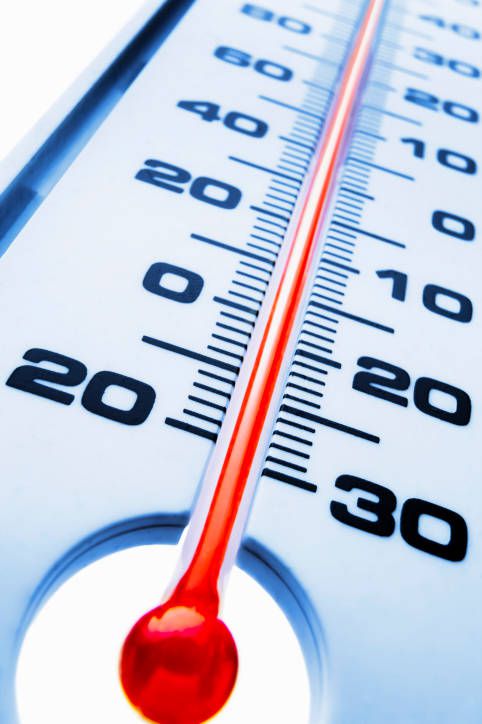Lawn Care Tip of the Month: Summer heat safety
Posted on:Aug 17, 2016
This is Part VIII of our Lawn Care Tip of the Month blog series.

It’s not been the typical August in Kansas…It’s been wetter and cooler than normal (lower 90s instead of upper 90s/100s), so we’re not baking like we usually do this time of year. Then again, the month is only half gone; crossing our fingers that it stays (relatively) cool.
Still, summer is the season for heat, and this month’s topic is heat safety. The best way to beat the heat is to stay indoors and/or spend your days at the pool or beach (with plenty of water and sunscreen). But some of us aren’t so lucky, so let’s beat the heat with these summer safety tips.
Skin Cancer Risk
The risk of skin cancer is higher if you spend long periods in the sun. That's not good news if you make your living outdoors. The good news is the American Cancer Society gives three easy steps that reduce your risk of skin cancer:
1) Avoid direct exposure to the sun when UV is most intense (usually between 10a and 4p)
2) Spend more time in the shade at mid-day when sunlight is strongest
3) Follow the Slip! Slop! Slap! and Wrap! rules:
 Slip! on a shirt. Cover up with comfortable, protective clothing made of tightly woven fabrics that light cannot penetrate.
Slip! on a shirt. Cover up with comfortable, protective clothing made of tightly woven fabrics that light cannot penetrate.
Slop! on sunscreen. Apply generous amounts sunscreen and lip balm with an SPF 30+ rating and broad-spectrum UV protection to exposed skin before going outdoors and throughout the day.
Slap! on a hat. Wear a hat that shades your face, ears and neck.
Wrap! on sunglasses. Wear sunglasses with 100% UVA and UVB protective lenses to shield eyes and surrounding skin.
Heat Exhaustion
According to the Red Cross, excessive heat can lead to sunburn, heat cramps, heat exhaustion and heat stroke. The best way to curb heat cramps is to find a shaded area, rest, stretch lightly, and drink a half a cup (equal to 4 fluid ounces) of water every 15 minutes.
Signs of heat exhaustion include 1) cool, moist, pale or flushed skin; 2) heavy sweating; 3) headache; 4) nausea; 5) dizziness; 6) weakness/exhaustion. If you or someone around you is exhibiting these symptoms, move to a cool area, remove or loosen tight clothing and spray the person with water or apply a cool, wet cloth or towel to the skin. Fan the person. If they are conscious, give small amounts of cool water to drink. Make sure the person drinks slowly. Watch for changes in condition. If the person refuses water, vomits or begins to lose consciousness, call 9-1-1 or the local emergency number.
The Red Cross also reminds us that heat stroke can be LIFE-THREATENING. Signs include hot, red skin which may be dry or moist; changes in consciousness; vomiting and high body temperature. Call 9-1-1 or the local emergency number immediately if someone shows signs of heat stroke. Move the person to a cooler place. Quickly cool the person’s body by immersing them up to their neck in cold water if possible. Otherwise, douse or spray the person with cold water, or cover the person with cold, wet towels or bags of ice.

